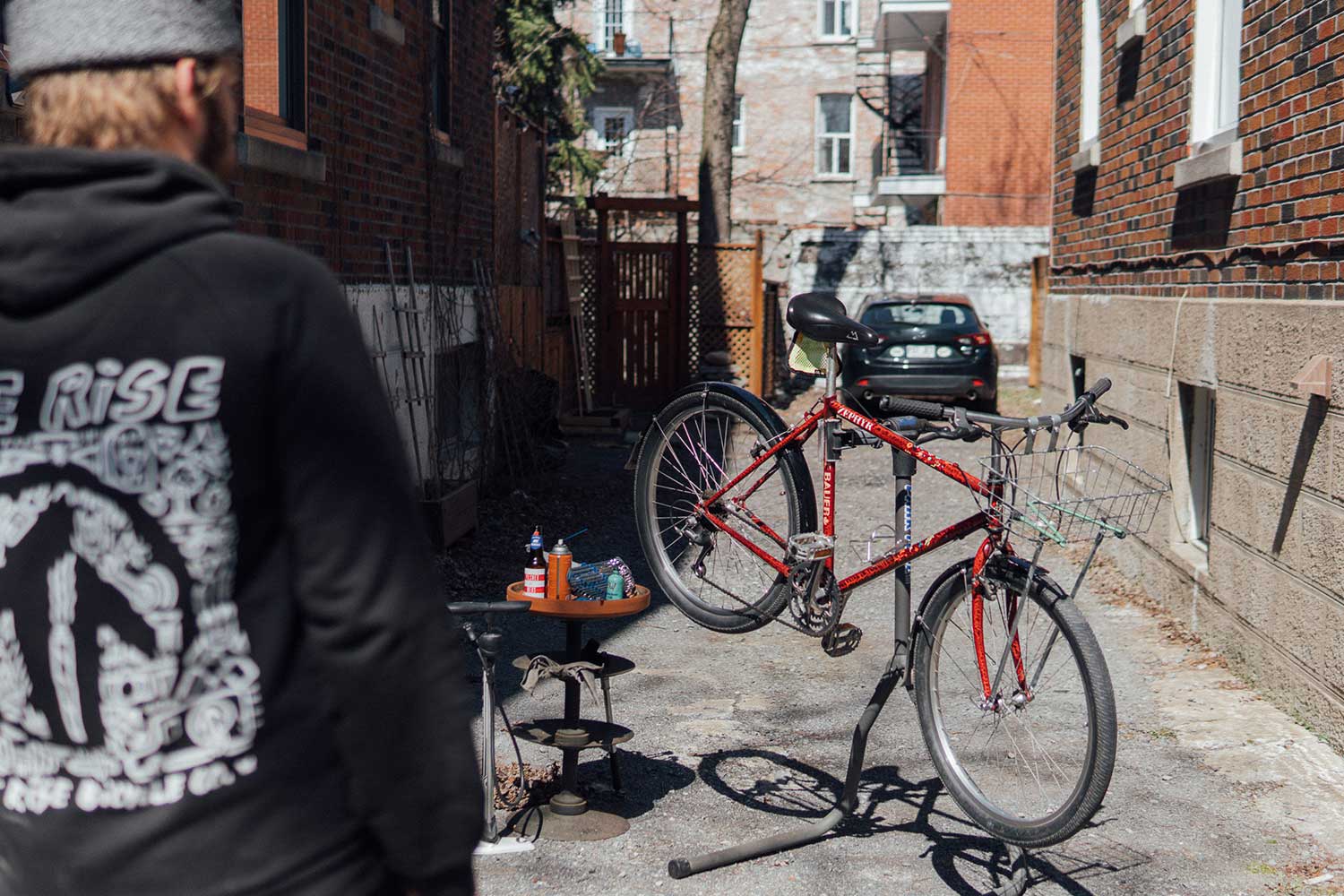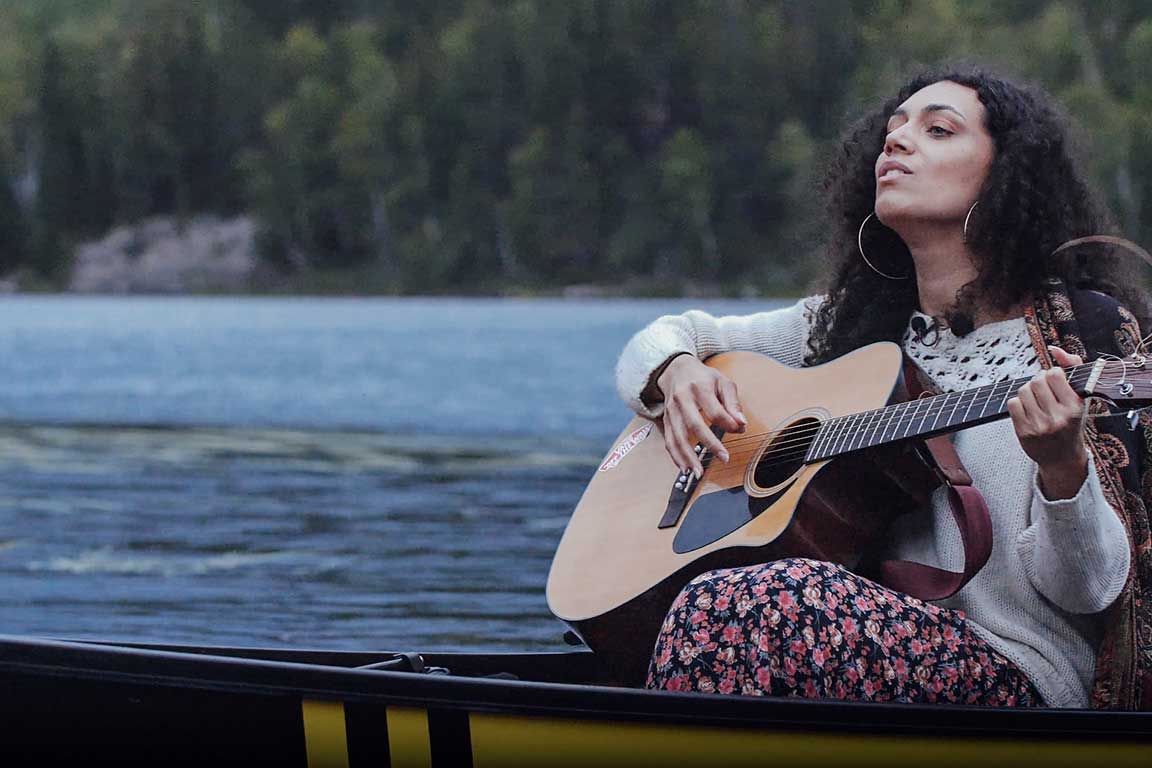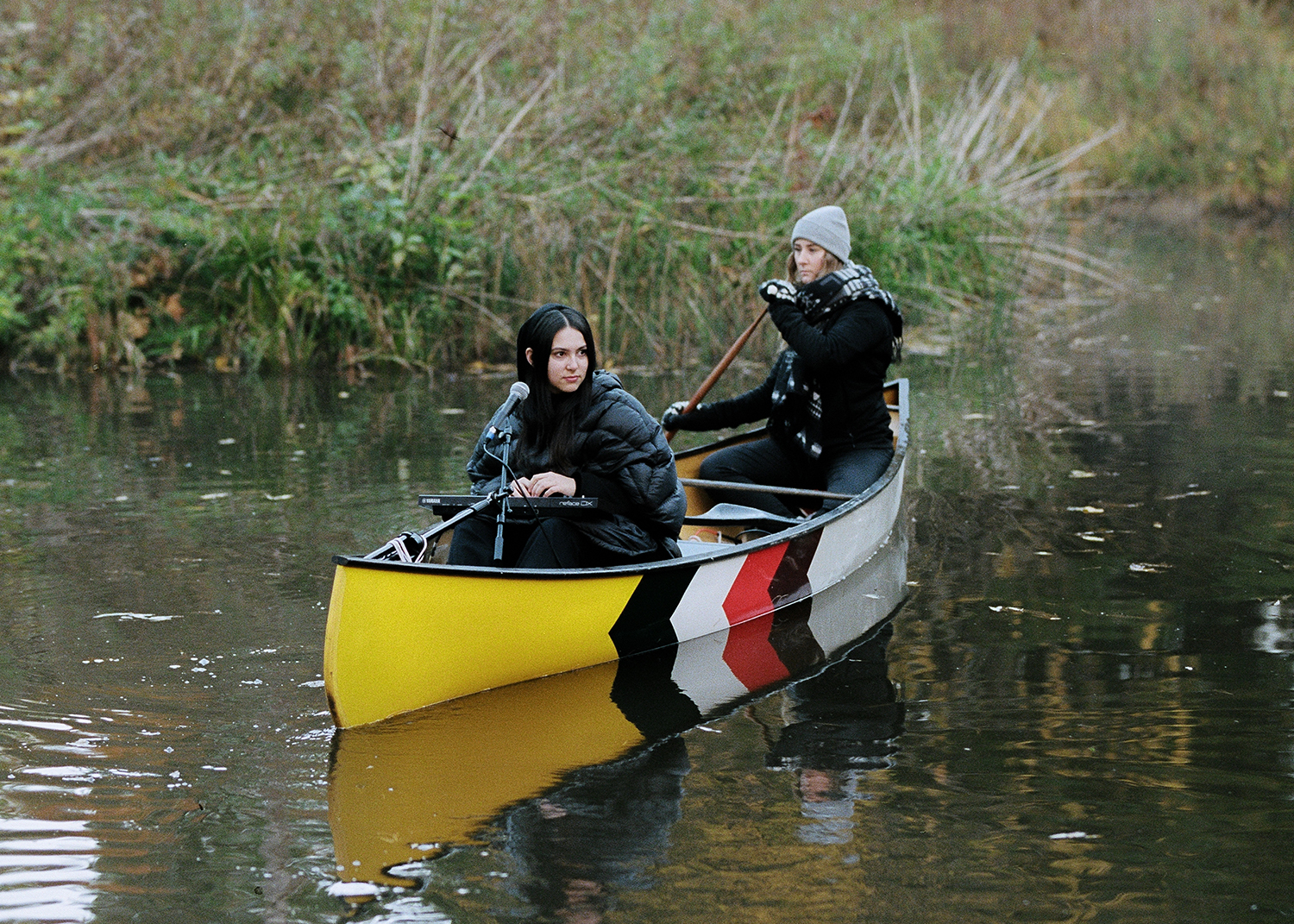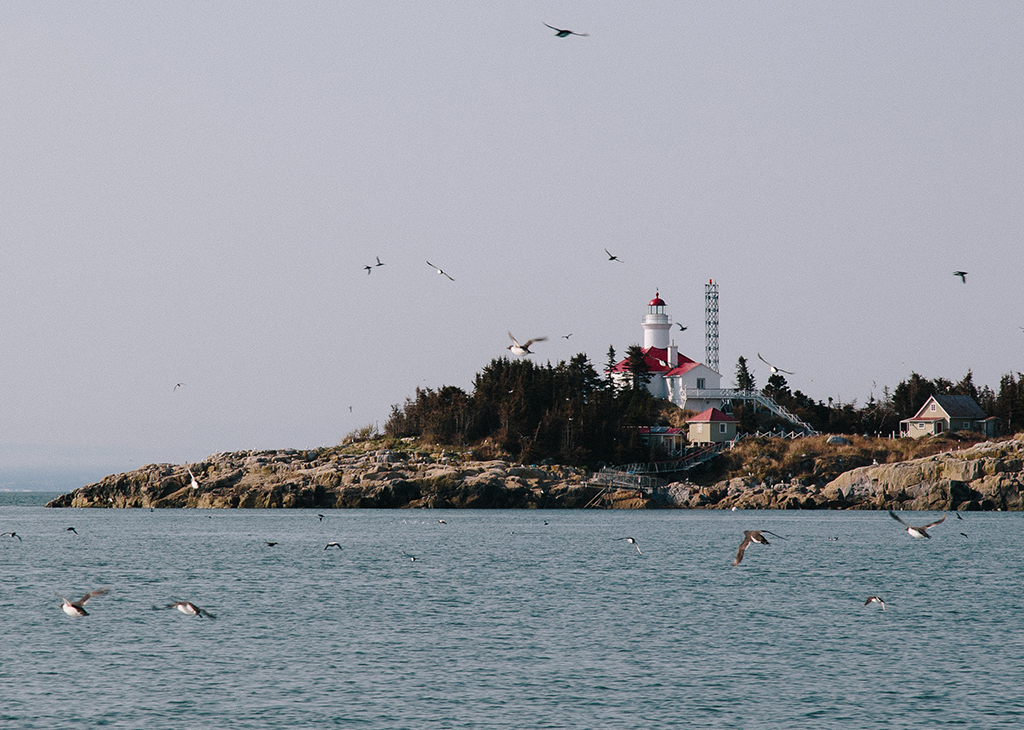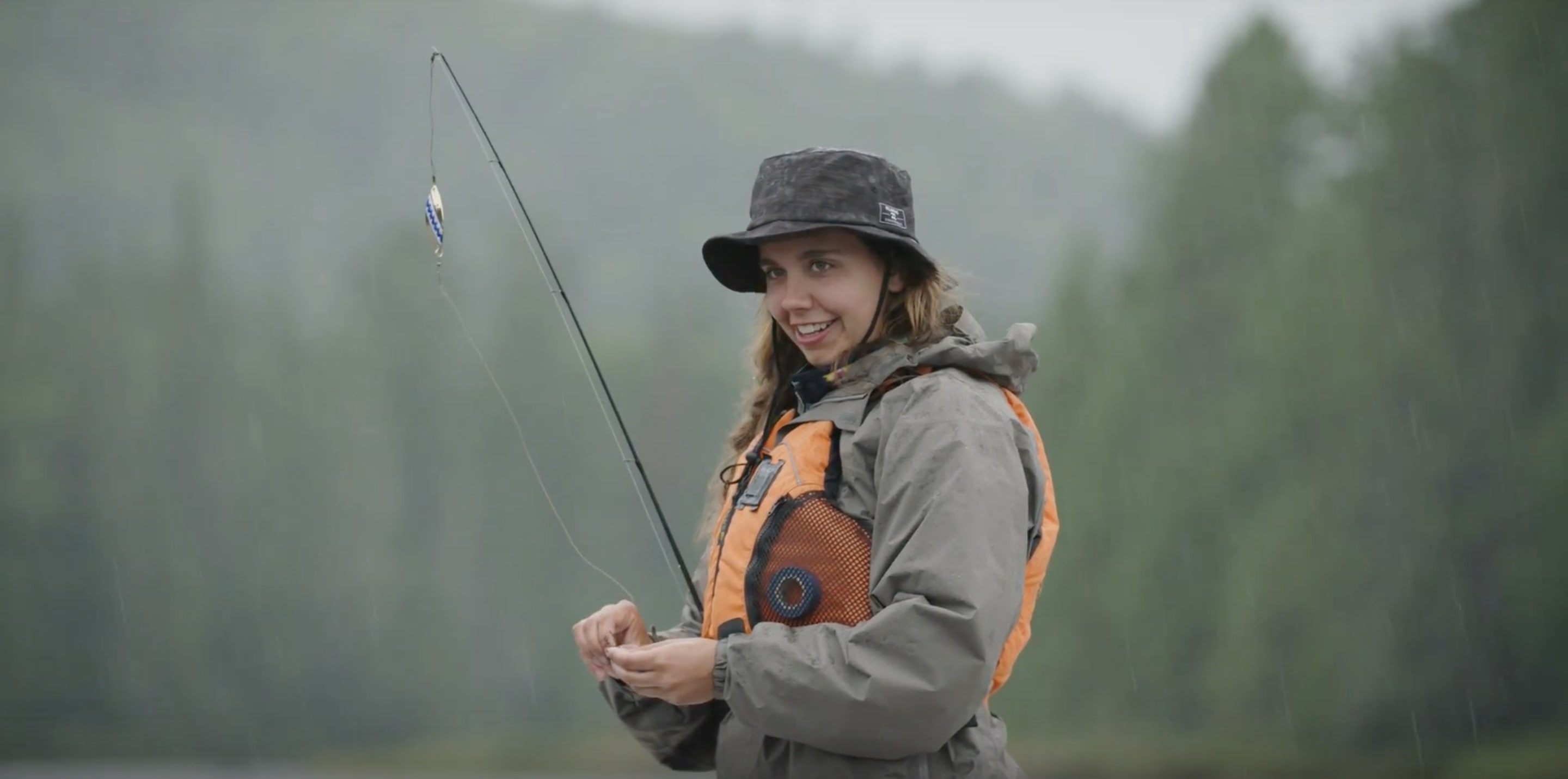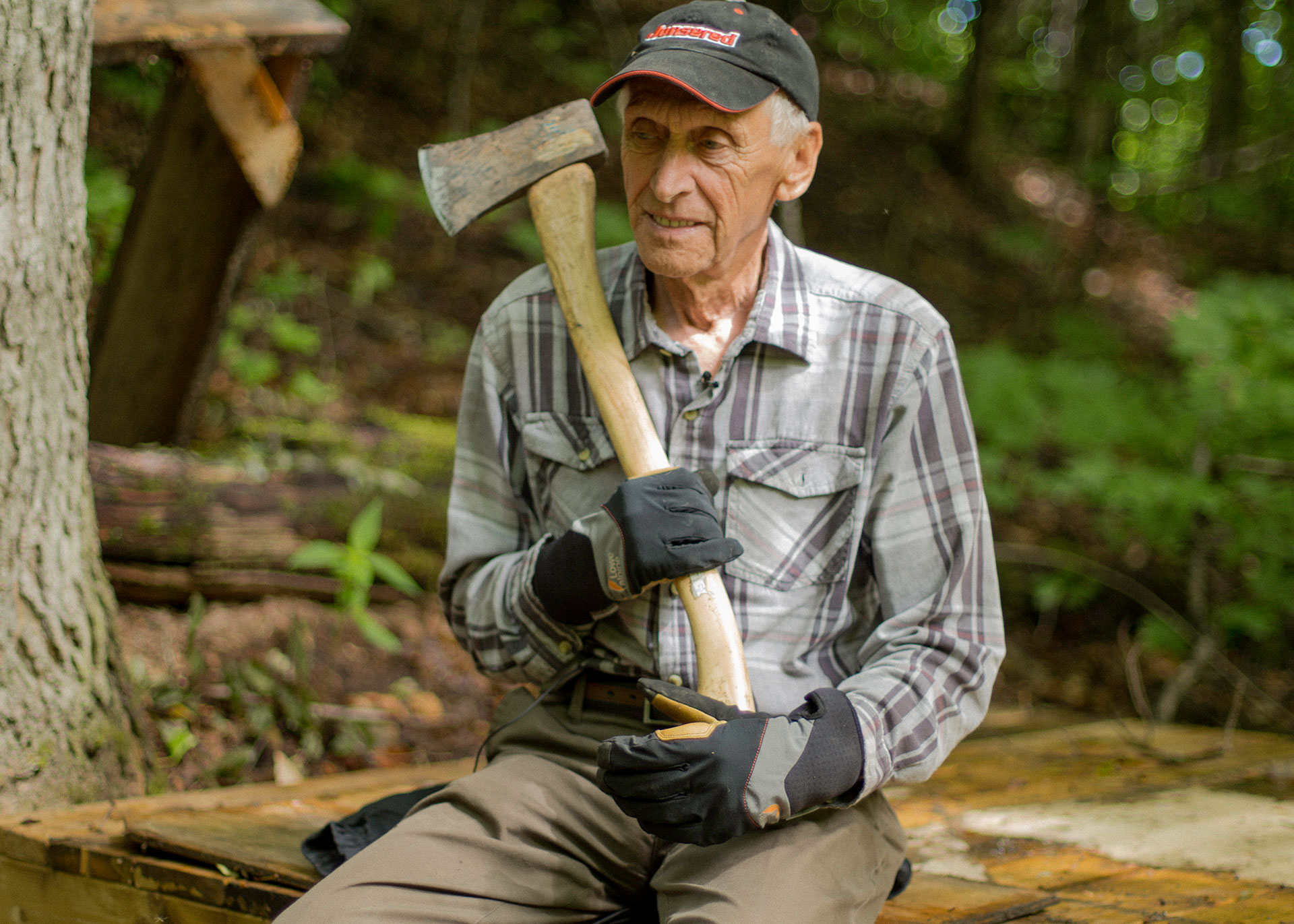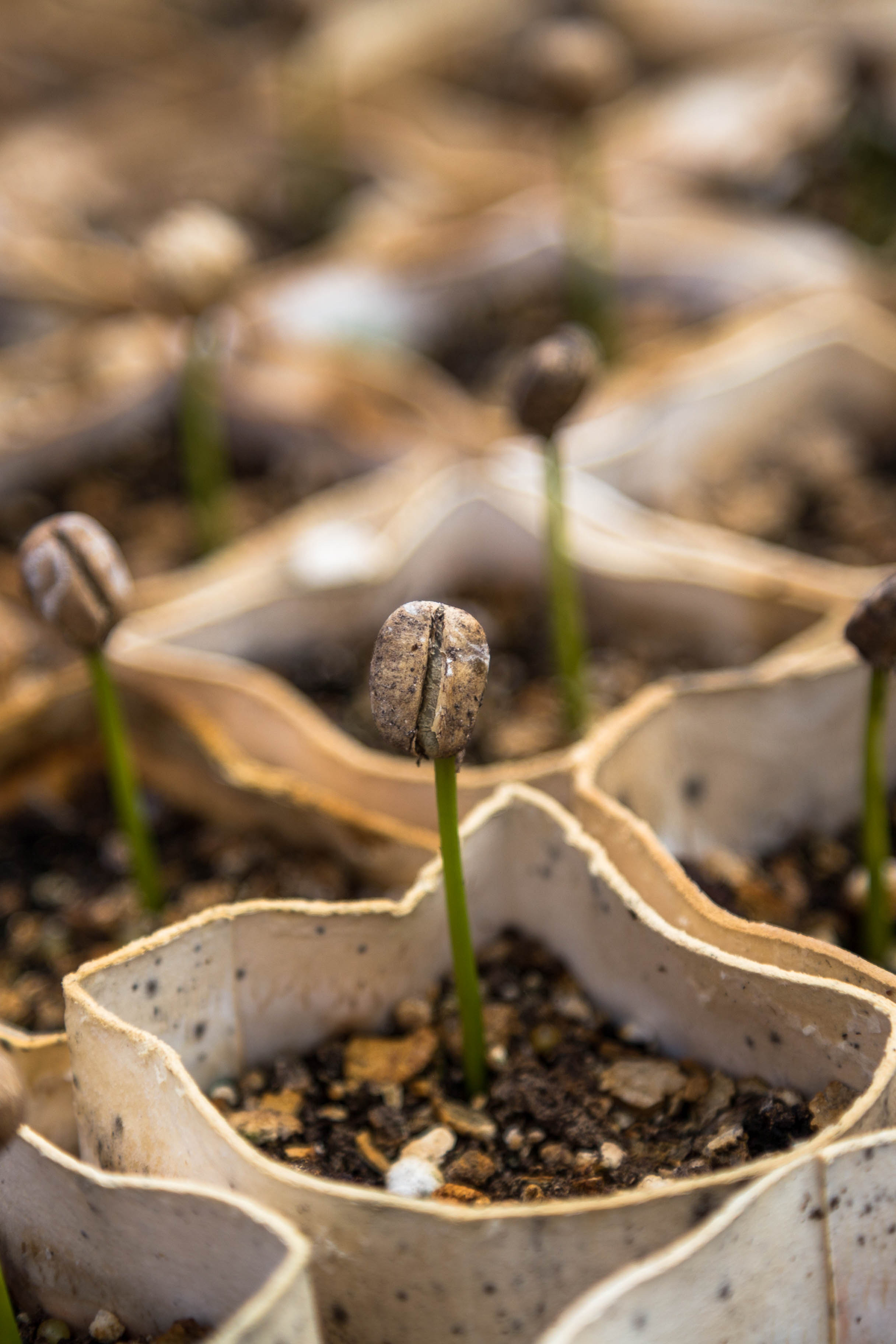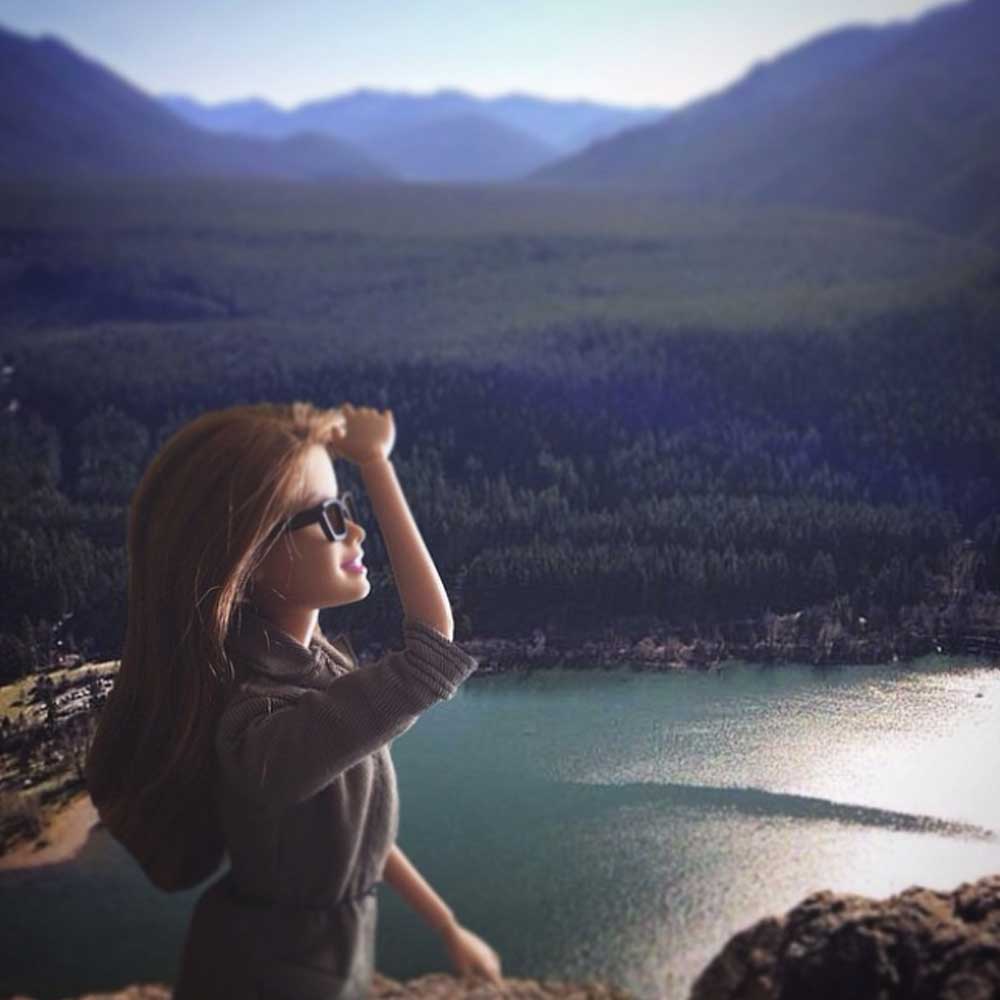BESIDE + RADIO-CANADA
Spoils of #nature on Instagram
Natural sites are being overrun by a new wave of tourists just "doin' it for the 'Gram." And the consequences are far from harmless: threatened fauna and flora, exhausted staff, competitive jockeying for framespace. When our call of the wild rings false.
Intro
On a smartphone screen, a woman balances on a half-submerged tree trunk. Turquoise water stretches out on all sides, with the blurred reflection of a mountain, pine trees, and a glacier. Alone in the world, in an intimate moment with nature, she contemplates the beauty that surrounds her. She’s smiling. It’s the “perfect” picture.
________
Cliquez ici pour consulteR la version française de cet article sur le site de RADIO-CANADA
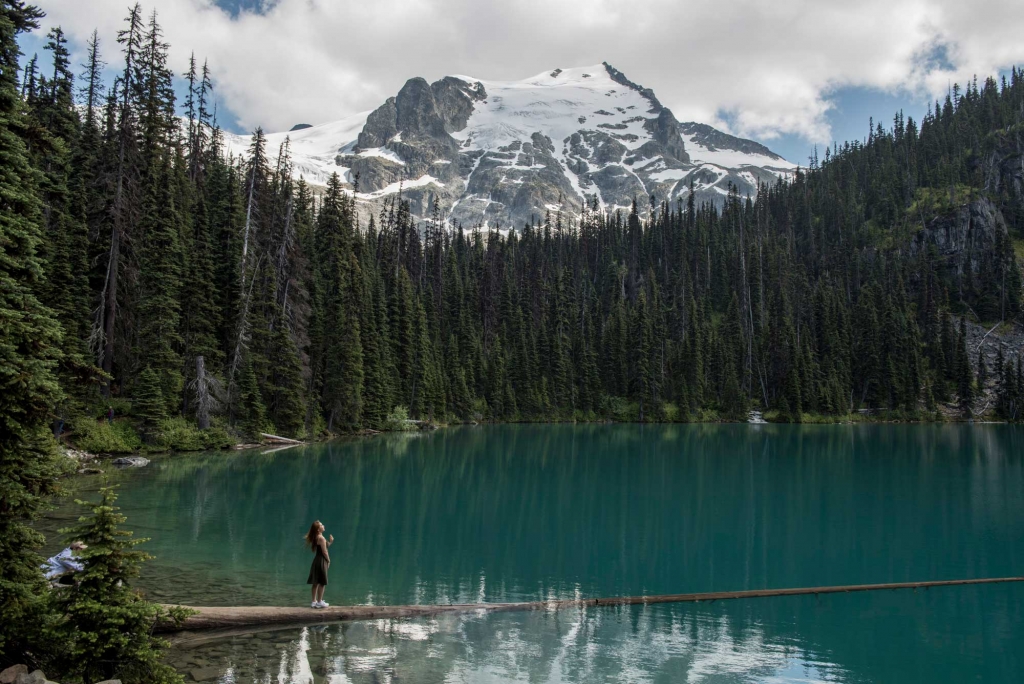
Perfect framing, colouring, construction, mood, and in the perfect setting. Yet on the other side of the camera, 20 people are lined up to immortalize the same perfect scene, on the same log. Several small groups orbit around, telephones in hand. A portable speaker spews “Don’t Stop Me Now” by Queen into the landscape.
A young woman sits crouched on the shore and leads the photo session with gusto.
“One more!
“Good one!
“Next!”
In the crowd, people are fixing their hair and taking off layers despite the chilly air; some even strip down to bathing suits because in the photo world, it should be summer.
Passersby call out in mock encouragement: “Go! Go! Go!” “Do it for the ‘gram!” A hiker tries to push her way through the crowd. “Excuse me! Excuse me! Coming through!” Frustrated, she jabs her walking sticks into the ground, hard. When she finally gets past the group, she lets out an exasperated sigh.
A couple stop in front of the log, examine the queue, gauge the waiting time, and hesitate. The young man gives his sweetheart an apologetic half smile. “I don’t think it’s worth it,” he says, and steps back onto the path. The young woman doesn’t answer. She casts a final glance at the log. Her disappointment is palpable. Slowly, she heads back onto the path leading to the park exit, eyes on the ground.
The British Columbian park Joffre Lakes is photogenic from end to end, but it’s the log, affectionately dubbed “Instalog,” that causes crowds to flock to this place.
In truth, it’s nothing but a tree trunk washed up on shore, wide enough to stand on, solid enough to hold the weight of several people at once. But people regularly drive two and a half hours from Vancouver just to see it and pose with it. “If you don’t take the picture, you weren’t here,” a Vancouver visitor said ironically the day I was there… before getting in the lineup himself.
Chapter 1
Joffre Lakes, lakes of “likes.”
I got on a flight from Montréal to come to Joffre Lakes. Since 2016, this provincial park has witnessed astounding numbers of visitors. It would seem that social media is to blame—along with the park’s renovation, which made the climb more accessible to amateur hikers. I wanted to witness the photogenic phenomenon for myself on the shores of its turquoise lakes, and, why not, find out if they were as radiant as Instagram makes them out to be.
I can confirm one thing right off the bat: the three lakes that make up Joffre Lakes are a surreal turquoise colour, a shade resulting from the rock particles suspended in the water. But what’s even more real is that you actually have to challenge yourself to get here—it’s no walk in the park. The ascending path is five kilometres long, with no large common areas where visitors can spread out. So it’s only around the last two lakes that they’re able to amass: Middle Lake, where the Instalog can be found, and Upper Lake, which looks directly onto the glacier. In their eagerness to take it all in, people often crowd onto the same couple of boulders like a colony of gulls—tired gulls armed with smartphones.

It’s clear that social media has contributed to the popularity of this place. Several people told me they learned about the park’s existence from Instagram, Facebook, and Pinterest. “We saw the geotag for Joffre Lakes with the pictures, and it created a bit of a domino effect,” a hiker explained as she stepped off the log.
The phenomenon goes well beyond the limits of Joffre Lakes, however. All over the world, natural sites are being overrun by visitors in search of the perfect picture to share on their social networks and collect landslides of “likes.”
At the time of writing, there are:
445 million #nature
228 million #beach
121 million #landscape
64 million #mountains
61 million #ocean
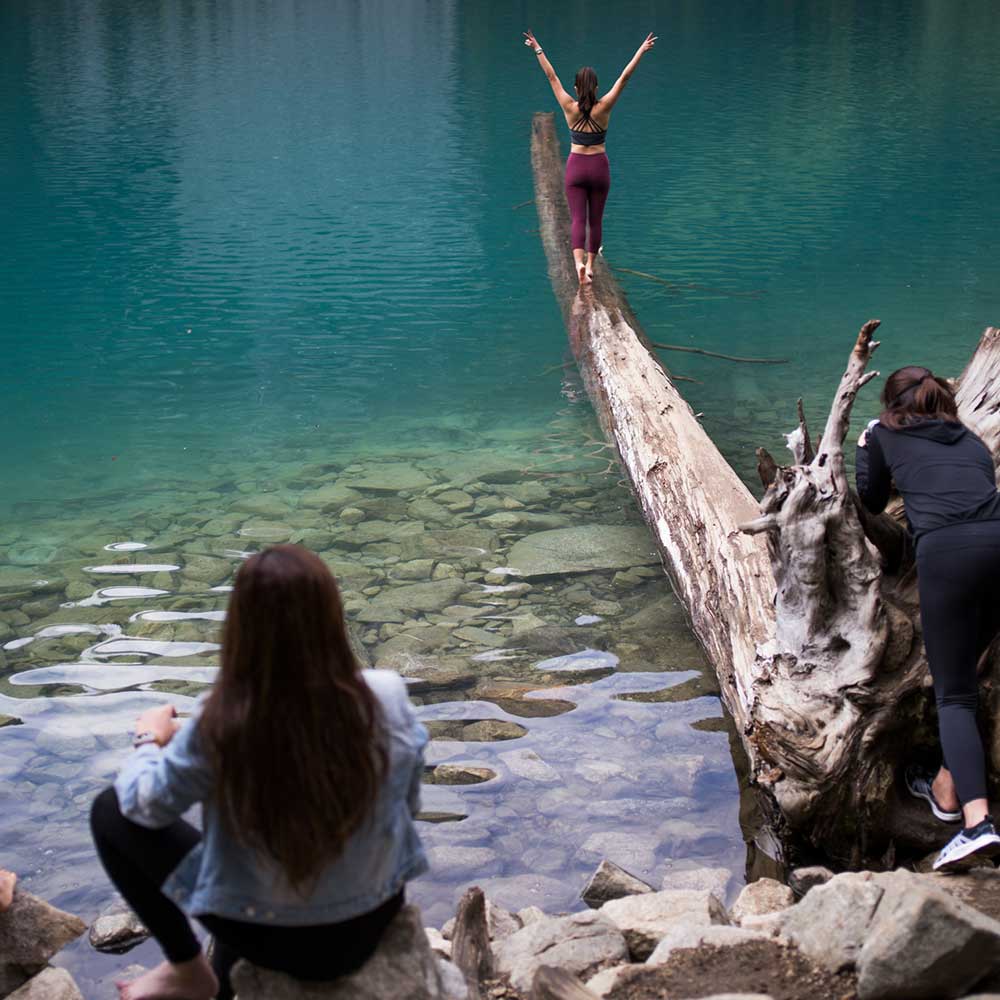


It’s fascinating what we can see when we put our cameras away for a moment and observe our fellow human beings.
In front of me, a young woman stands waiting idly for a kid to stop playing around in the frame of her idyllic shot. Another has the same “problem,” but with an adult, whom she inundates with passive-aggressive comments. Some prefer to photograph objects, like a bottle of Coca-Cola against a glacier backdrop, a jujube shaped like a Coke bottle against a glacier backdrop, a box of strawberries against a glacier backdrop.
“It’s the millennial society going to hell!” joked a visitor at Joffre Lakes.
Personally, I was more amused than discouraged by what I saw. But on the ground, it’s no laughing matter.
Chapter 2
The dream of a park warden, trampled.
I spoke to Charlie*, a former park warden who tried for several years to combat the growing plague of amateur photographers at Joffre Lakes. He has witnessed the gradual degradation of his work environment in the line of fire of portable devices. Anxious and unhappy, he eventually threw in the towel and quit.
It was Charlie’s dream to become a park warden for a long time. To him, getting hired was on par with winning the lottery: he felt so lucky to get to revel in solitude, to learn about the flora and fauna in all their various forms, and to protect them and educate people about them.
But that feeling of luck evaporated about three years ago when Joffre Lakes started to be smothered under record numbers of visitors. “The workload increased, the park-use numbers skyrocketed, and these beautiful, sacred places began to feel like a Best Buy on Boxing Day,” Charlie says.
Between 2000 and 2015, an average of 52,300 tourists visited the park. Last year was the most visited year in the park’s history, with 183,000 visitors—an unprecedented increase of 250 per cent. The 10 busiest days of the year saw an average of 2,300 people. In a report from June, BC Parks mentions a “dramatic increase.”
*He asked if he could be interviewed anonymously, so his statements would not affect his professional advancement.

“It was already popular 20 years ago. But it’s just insanely popular now. You used to be able to get a parking spot,” says Stephen Hui, author of the book 105 Hikes In and Around Southwestern British Columbia.
Joffre Lakes has even become a laughingstock for nature enthusiasts everywhere. “It’s the hike you refer to when you talk about a really crowded hike.”
And this visitor traffic has had a direct impact on the atmosphere of the park, as well as on the work environment. “As I clean the first outhouse, a line quickly forms,” explains Charlie, describing a typical workday at Joffre Lakes. “People begin to get impatient and ask me to hurry up. I see a man leaving a bag of garbage behind a tree, but my hands are full. I watch a group of tourists feeding chips to a group of oversized, sick whisky jack birds. Behind me, a couple is doing a photo shoot for protein powder and are off trail damaging vegetation. I can’t keep up. And it’s slowly killing me.”
According to Charlie, hikers from years past, who would arrive well-prepared, have given way to another kind of tourist: the kind that doesn’t care about the outdoors. “They saw a picture on Instagram or in a magazine, and they want that photo,” says Charlie. “Once they get there, their goal is to get on that trail and get out. They are not there to experience nature. Which is obviously super depressing…”
They are also the kind of people who arrive with a coffee in hand and play music on their cellphones. The kind who don’t think to bring a bottle of water, and who wear flip-flops or little white sneakers, even when it’s raining and the ground is muddy. Or even high heels. And who end up barefoot, because the heels were too high and thus abandoned along the way.
“We started congratulating people for wearing hiking boots,” Charlie says glumly.
“No matter how many hours I spent at the trailhead or on the trail educating people, they’d continue to abuse the park. I was slowly starting to feel like an underpaid babysitter for a very disobedient parade of children,” says Charlie. “I felt like nothing I could do would save this park. No matter how fast I hiked, how much garbage I packed out, or how many times I scraped feces off the walls and ceilings of the outhouse. This was our new normal. Every single day.”
Car Craze
The parking lots were full when I visited the park. On the Saturday when I left, a few cars were even spilling out onto the highway, which is illegal—but it could have been worse. Charlie has seen cars parked all along the shoulder of the highway between Joffre Lakes and the neighbouring park, a dozen kilometres away.
This chaotic situation calls to mind the statement by RCMP Corporal Mike Hamilton, obtained by photographer and hiker Steve Jones after an information access request. In a letter dated August 6, 2018, the corporal writes about having had to attempt to stop people from parking on the side of the highway. He gave up after two or three hours.

“I experienced what I can only describe as driver anarchy and mass crowds. I was nearly struck head-on by an inattentive motorist, I witnessed hikers standing and sitting in the middle of the highway taking photos, motorists stopped in the middle of the highway waiting for overflowing and unsafe parking lots to be vacated, and a complete disregard for anyone else’s safety,” writes Mike Hamilton.
Charlie remembers feeling just as powerless. “I have to drive away and ignore it, there’s nothing I can do.”
Birds of Joffre Lakes

The sky is blue, turquoise water sparkles in the sun. “Is it raining?” asks a woman, confused. Around her, five hands, palms open, stretch simultaneously toward the sky, as though to feel the raindrops.

But it’s not the weather patterns these people are interested in: it’s the birds.
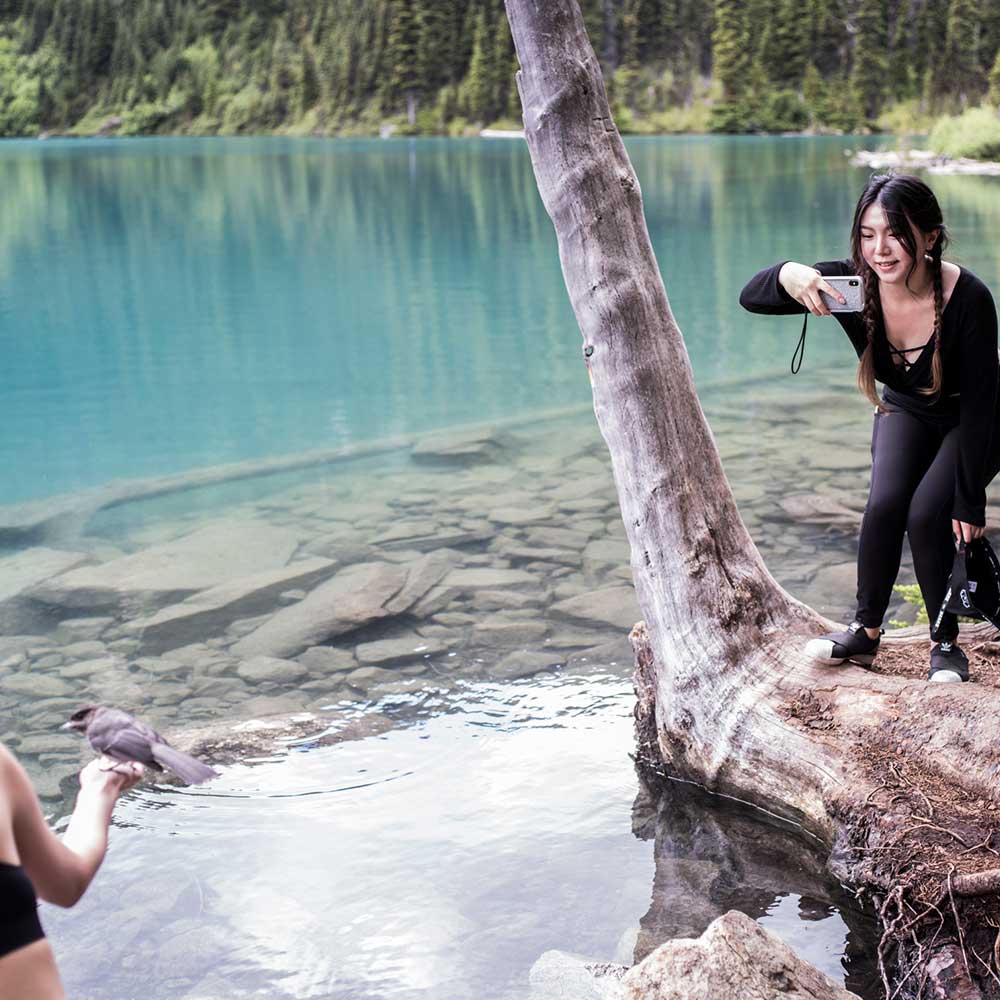
Though the Instalog may be queen of #joffrelakes, the birds get their share of fame too. Many tourists lie in wait for them, crumbs in one hand, phone in the other.

Photo @MarcoSecchi
The pictures are so popular they sometimes give a false impression. “A family asked if the petting zoo was at the top [of the mountain]. They thought they could feed bears and birds because they saw a photo of someone feeding the birds,” says Charlie.

It’s important to resist the desire to recreate this scene just for the sake of a nice photo. Feeding these grey jays puts their lives in danger.

“All summer long, they eat granola bars and Doritos and gummy worms.”
—Charlie
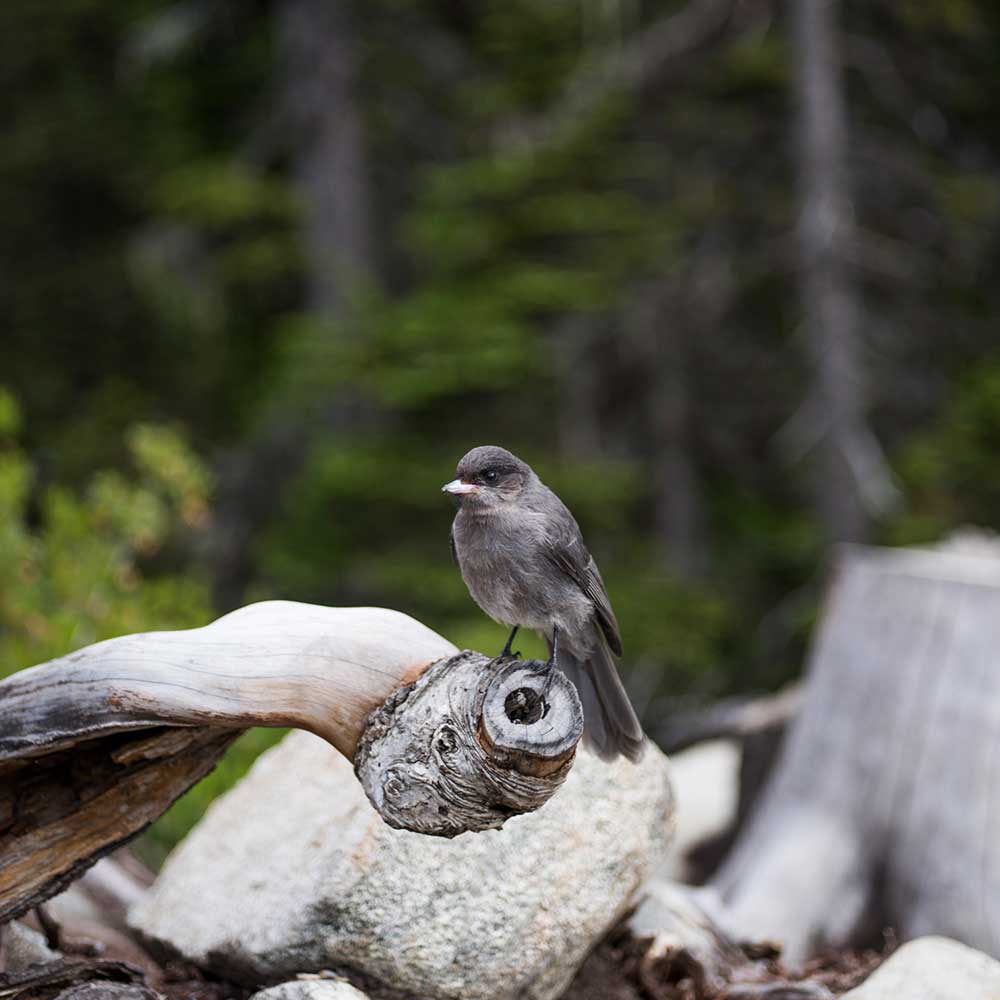
“When winter comes and everyone’s gone, they’ll forget to forage for their own food, and their habits will have changed. They might migrate down to the parking lot and wait for people there, or they just die.”
—Charlie
Can Joffre Lakes Be Saved?
According to Charlie, the problem isn’t just Instagram—it’s much more widespread. “I think social media is the culprit for the numbers, but I also think it’s a lack of education and a lack of there being any resources for people to learn this stuff.”
Charlie wants funding allocated for nature interpreters and park wardens to be posted at the entrance to Joffre Lakes to explain to visitors that they are entering a protected wild space, and that it’s important to follow the rules in order to preserve the flora and fauna.
“And BC Parks is not reducing the numbers in the park, so it’s not becoming this wilderness experience. It’s just this mass shopping mall of people.”
Charlie is not alone voicing British Columbia Parks’ lack of funding. BC Liberal Member of Legislative Assembly Jordan Sturdy—who represents the West Vancouver–Sea to Sky riding, and who was mayor of Pemberton (where Joffre Lakes is located) for eight years—has voiced similar concerns. He believes the BC Parks annual budget—somewhere around $40 million—should be doubled.
“Not every park needs more investment, because there are many parks that really just need to be left alone, such as wilderness parks that are preservation areas. But there are other parks, like Joffre Lakes, Garibaldi, and Porteau Cove, that are highly visited and could benefit from additional management and infrastructure.”
Charlie couldn’t agree more. “If there was a park like that, that was being well funded, it would have picnic areas with staff that would be cleaning up; there wouldn’t be people all over the park eating and dropping their food and leaving garbage. It would be confined to a specific area.”
The day after my visit at the end of June, BC Parks unveiled an action plan in response to the growing visitor traffic at Joffre Lakes. In the document, the government recognizes many of the issues Charlie points out, including that visitors are damaging the plant life and feeding wild animals. It also reports on the influx of people on the trails, the lack of toilets, and the danger posed by parking along the highway, not to mention the visitors’ lack of preparation.
To solve the problems, the additional parking lot will be expanded by 200 spaces, to a total of 450 spaces. It was also announced that a shuttle service from the neighbouring park would be put in place, and that the Parkbus (a non-profit organization that offers shuttle transport from Vancouver) would improve its services.
It was also announced that two First Nations supervisors would support the work of the park wardens. At present, three wardens oversee the entire Pemberton region. But they spend the majority of their time at Joffre Lakes. According to Charlie, having 14 people to monitor the masses wouldn’t be too many. In fact, it wouldn’t even be enough.


We contacted BC Parks to discuss these issues further, but our interview request was declined. We were instead redirected to the action plan announced in June.
Charlie describes the plan as a “Band-Aid” that doesn’t do anything to solve the problems of overpopulation.
Photographer Steve Jones jokes that stepping onto the Instalog should be taxed, to finance maintenance of the park.
Charlie would rather chop it up and have it disappear forever.
Chapter 3
“Like a zombie apocalypse.”
Joffre Lakes is not the only place to which people flock for pretty pictures. Since I started researching the subject, there’s not a week that goes by without Instagrammers grabbing headlines.
In Norway, it’s in Trolltunga (“troll’s tongue” in English), where amateur photographers roll up by the thousands. This rocky peak—extending out from a cliff 700 metres up—saw 90,000 visitors in 2016, compared to 800 just six years earlier, a staggering increase that can be attributed almost entirely to social media.




What these mind-blowing images do not reveal is the queue visitors have to wait in for hours to take them. The influx of tourists has also resulted in an increase in the number of rescue operations—far too many people arrive poorly prepared for a 10-hour hike up into the mountains.
Closer to home, the family farm Bogle Seeds experienced the harsh reality of Insta-popularity one Saturday last summer. The farm, located about an hour from Toronto, was inundated by hordes of people after pictures of their sunflowers went viral on social media. The owners’ son described it as a “zombie apocalypse.” It was total chaos: people ignored the farm staff, entered the property without paying, trampled and picked the flowers, and left their garbage behind. After that terrible day, Bogle Seeds decided to close their farm to the public. For good.

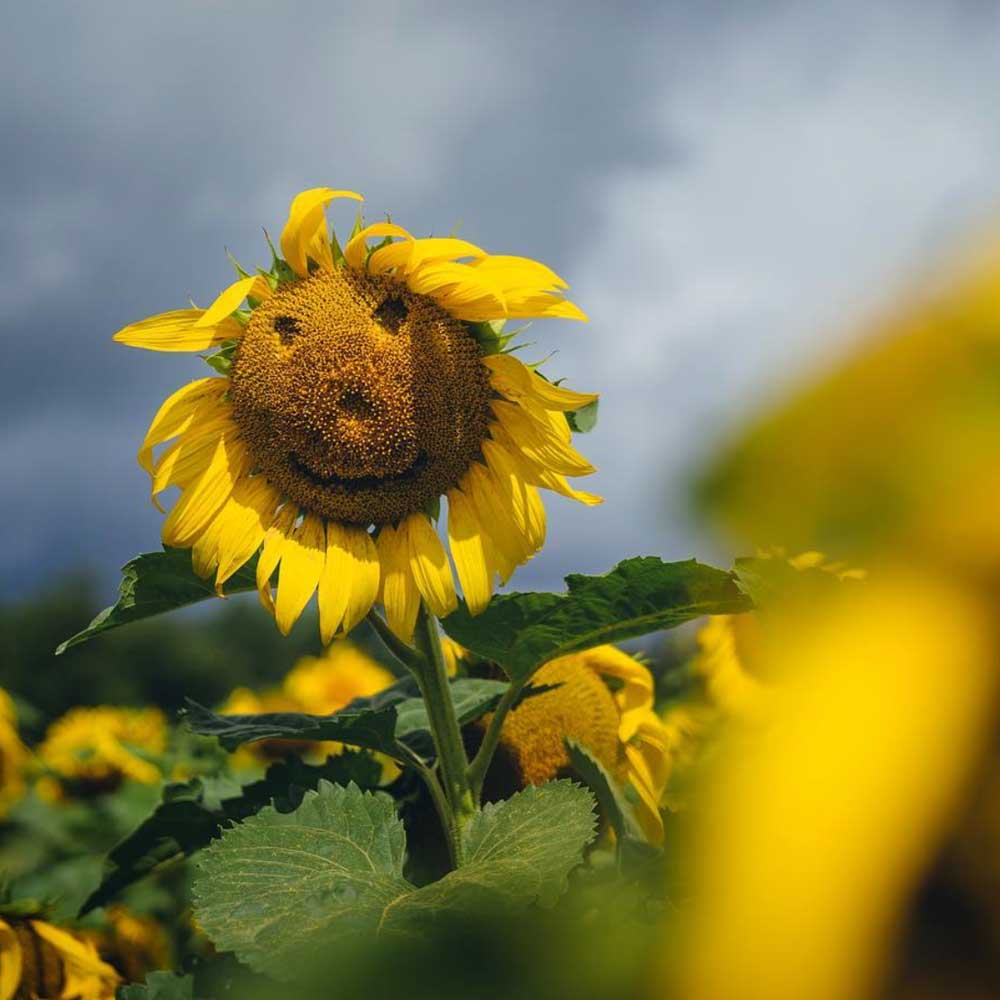


Also last year, the sunflowers gracing a farm in Winnipeg were subject to a similar fate: 2,000 people arrived in a single weekend to take pictures and left the fields significantly damaged in their wake. An Ontario lavender farm also experienced the vast lack of respect from people in search of selfies, who picked the flowers and climbed over the fences, sometimes even outside of opening hours.
Even the California poppy fields fell prey to the search for Insta-perfect pictures. In the first week of March, a handful of influencers turned up in the little village of Lake Elsinore to capture the vibrant beauty of the orangey-red flowers. The hills were nearly instantly covered with Sunday photographers, smartphones in hand; the craze culminated on St. Patrick’s Day weekend, when a whopping 100,000 people showed up out of nowhere.
Mount Vinicunca in Peru, also known as the Rainbow Mountain, bears mentioning as well; its peaks striped with turquoise, red, and gold are a hit on Instagram.


The setting was discovered by tourists about five years ago, and now, nearly 1,000 people climb the mountain each day, which has led environmentalists to fear for the integrity of its natural state and well-being. Already, a wetland that used to provide a resting place for migrating ducks has been paved over to make way for a parking lot. A dirt path has also been seriously eroded to the point of collapsing in places, according to a tourist who visited in 2016 and again in 2018.
Kanarraville, a village of 350 in Utah, has encountered problems since photos of its waterfalls went viral. Not only do they have trouble stemming the flow of cars, but there is concern that the spring supplying water for the community could be contaminated.
Speaking of contamination, in New Zealand the natural Mermaid Pools of Matapouri have been polluted with sanitary napkins, sunscreen, urine, excrement, and all kinds of other refuse. This fragile ecosystem had to be closed to the public last winter for an indeterminate length of time.
The pervasive lack of etiquette rife in certain tourist circles has sometimes led to radical decisions. For example, Vance Creek Bridge, an abandoned arch bridge in the middle of the forest, had to be demolished after several acts of vandalism. Situated in Washington State, it became popular in 2012—thanks to users of the platform who had geotagged it at the time.
And it’s not only natural sites that are at risk; it’s animal inhabitants, too. Last spring, National Geographic magazine published a feature article on the suffering of exotic animals, heightened by what they called “selfie tourism.” The introduction cites the example of Maetaman Elephant Adventure in Thailand, where tourists regularly take pictures with the large mammals. What people don’t know is that the behind-the-scenes conditions in these settings are often appalling: the animals are chained up, and a bullhook (a metal rod with a hook on one end) is used to get them to move. The scenario is repeated all over the world, where large numbers of exotic animals are drugged, abused, and kept in cruel conditions. Something to keep in mind the next time the desire strikes to pose beside an elephant, a tiger, or a dolphin.
—
Do you mostly experience nature online, or in real life?
Green Screen casts a curious, comical, and commonsense gaze upon our relationship with tech and nature.
GET YOUR COPYChapter 4
Call of the wild, or pursuit of vanity?
Listed side by side like this, these examples can seem shocking. My first impulse is to laugh at the silly, thoughtless actions of narcissistic people.
But that would be a show of bad faith, because I know that I, too, am that person when I’m on vacation. The one who fills her phone with badly framed shots. The one who takes pictures of everything and nothing, just in case. Not to mention: a friend once ditched me on a bridge in Maastricht, in the Netherlands, because he was so exasperated by my photographic frenzy. Was I upset? Yes. Did I put my phone away? No.
There’s nothing inherently criminal about wanting to capture nature in a photograph. Since the invention of photography, there have been people snapping shots of nature from every possible angle. Even before that, nature was rendered in sketches and painted on canvases, walls, and caves. The difference is that photography is now more accessible than ever. Nearly every single one of us has a good-quality camera right there in our pocket. And we are bombarded with a glut of images every day that make us want to travel across the world ourselves.
We desire nature. Not only is it spellbindingly beautiful, the attraction we feel to it is inscribed somewhere in our DNA.
This is what Colin Ellard, professor and researcher of cognitive neuroscience at the University of Waterloo, explains to me. Our innate, communal attraction to nature used to be rooted in the need to find food. A lush forest was a synonym for abundance: berries, fruits, and animals could be found there. Even if this link between nature and food no longer exists for us, the attraction remains.
“It’s as if we have this kind of deep need, motivation for approaching scenes of nature, that’s very much like other drives we have, like the drive for food, the drive for sex. It’s akin to that, it’s something that we seem to need, and that, when we don’t have it, we suffer.”
We take pleasure in feeling the sun on our faces, in hearing leaves crunch under our feet, in the scent of pine; we love feeling cool water slip between our fingers. These pleasures are hardly superficial. On the contrary, recent research has proven that being in nature improves cognitive faculties, reduces stress and the risk of depression, and even stimulates empathy. What’s more, according to an English study published this past June, people who spend two hours a week in nature are on average in better physical and mental health overall.
“People who are exposed to scenes of nature find that they think differently, they pay attention to the world in a different way, their emotional state changes,” says Ellard. His work has proven that, even when shown in virtual reality, these scenes have beneficial effects. Benefits that could be felt, he says, even by looking at a photograph.
On Instagram, this need to soak up nature is, however, perverted by another, equally pressing one: the need to show off.
“Those scenes of nature are kind of intrinsically beautiful, but a big part of the motivation to go there is proving that you were there. It’s like validating your travel,” explains Ellard.
John D. Boy, adjunct professor in sociology, has studied Instagram and interviewed some of its users in Amsterdam. He has observed that photographs can play the role of indicators of social status.
“If you’re looking for recognition from others, there is something safe about copying, about mimicry. It’s the safe way of showing that you’re part of a community, that you belong. If you want to affirm your belonging to the race of travellers, the kind of tribe of the global nomads, if you show a picture of yourself at the top of this mountain that has been posted a lot of times before, then you are kind of affirming that you belong to that whole group of people,” says Boy.
Influencer Jeanne Rondeau-Ducharme understands this need for belonging very well. Though she uses humour to denounce Instagram’s codes and their lack of authenticity, she has still built her social following in part by using them. This is what allows her to travel to the most beautiful natural sites in Québec—and make a living doing it.
Chapter 5
24 hours in the life of an influencer.
I wanted to meet an influencer in the “nature” niche who produces quality content and still holds a critical view of Instagram. With an account chock full of fabulous photos (@jeannemap), and a secondary account poking fun at what goes on behind the scenes (@jeannemaprap), Jeanne Rondeau-Ducharme turned out to be the perfect candidate.
Her profile is followed by some 75,000 people, whom she charms with images of enchanting forests, verdant mountains, misty landscapes, and secluded countrysides. I was not immune: one look at her photos and I wanted to pack my bags.
I followed Jeanne while she worked on a content creation job for the Bas-Saint-Laurent Tourism Association, one of her many partners for the summer. We planned to meet on the Île aux Lièvres, a stone’s throw from Rivière-du-Loup.
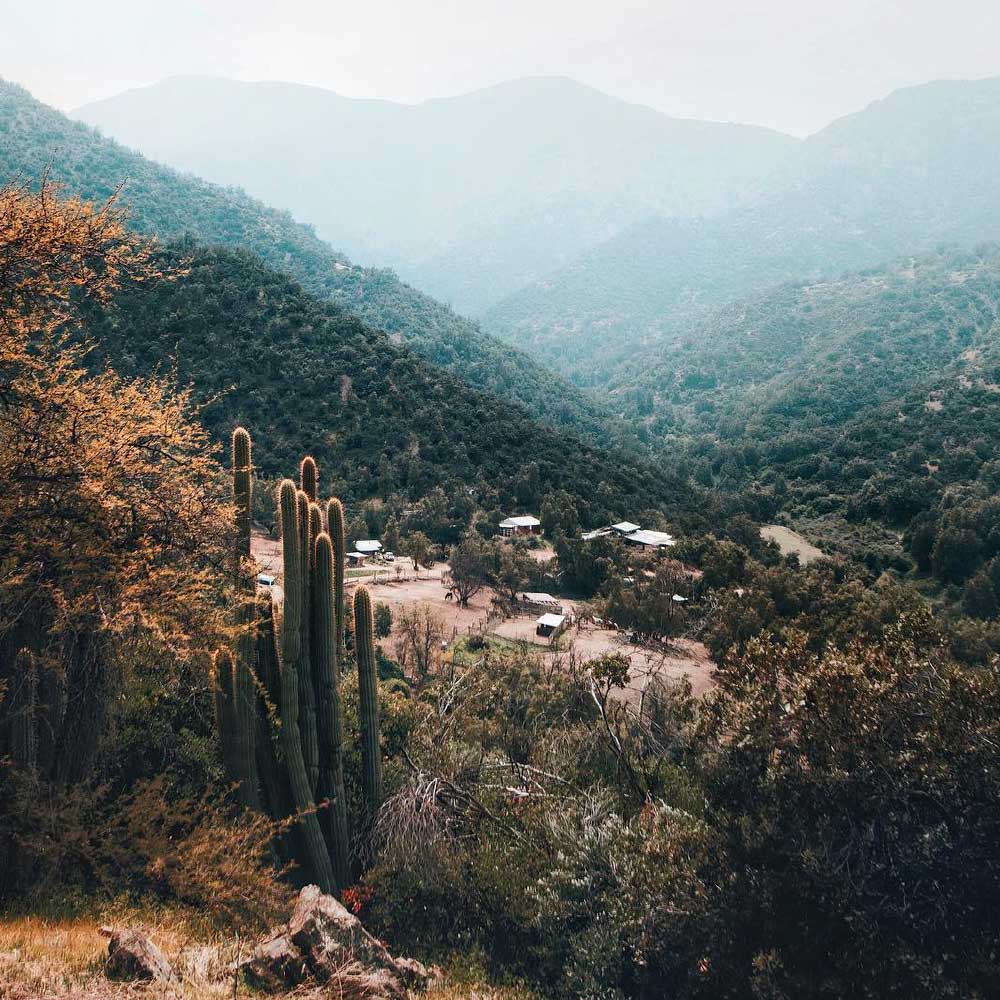


Here, the warm, salty air penetrates the pores of your skin. Silence is broken only by the chirping of the bird colonies that populate the next island. The blue of the sky fades gently to pink; it’s the golden hour, that moment when the light is perfect for taking photos.
On the shore, Jeanne flits around taking shots of the landscape.
“With a sunset like this you don’t even need a filter. You post this and it’s gorgeous. You can feel the moment even if you weren’t there.”
Jeanne studied marketing in school. At dusk, when we’re sitting down to talk about her work, she explains that she has, in a sense, let go of the artistic side of photography in favour of a more commercial approach.
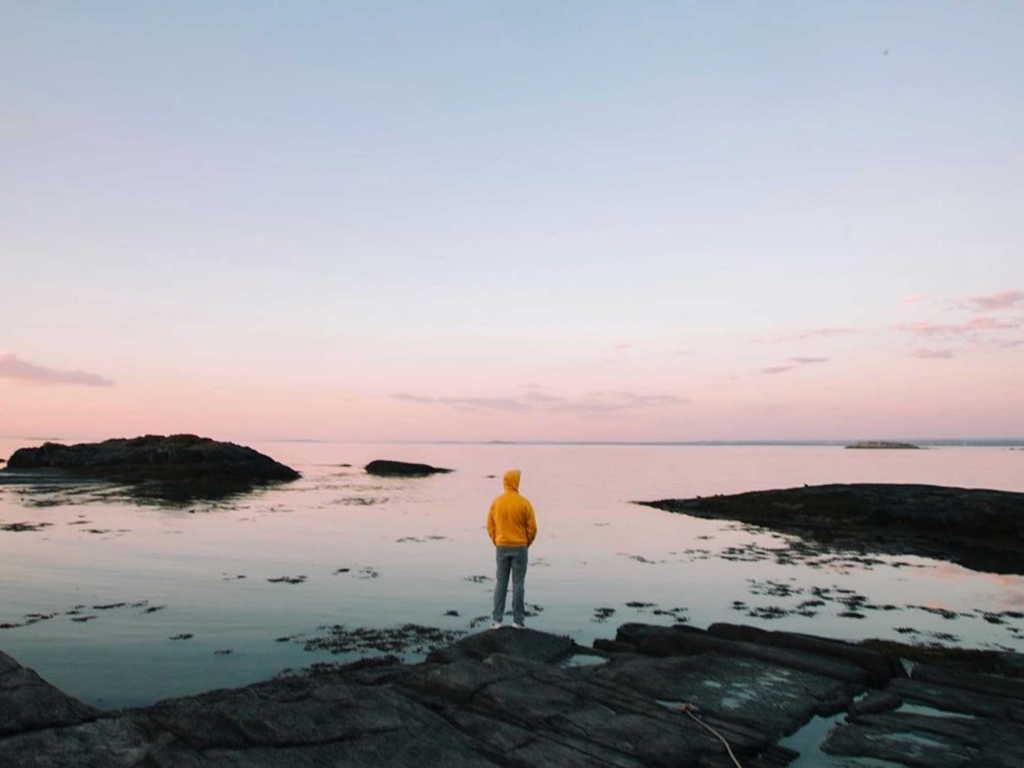
“I sell you the picture that [incites] the ‘Damn, do I ever need a vacation. I’m going there.’ I go with the shot that makes people want to experience a moment like that.”
The Extent of Influence—How Much Is Just Right?
Jeanne is hired to make places popular. One of her more faithful clients is the Société des établissements de plein air du Québec (Sépaq); she was, among other things, the artistic director of their Instagram account for a year.
For each press trip, Jeanne negotiates a certain number of posts and Instagram Stories. She also negotiates an amount of money, even though the trips are not always paid—some of them become something more like an exchange of services.
In spite of her many contracts, she’s not worried about having a negative effect on the province’s parks, which has been the case at Joffre Lakes and elsewhere.
“I’m a ‘soft influencer,’” she says. “No one yells ‘THAT’S JEANNE!’ when they see me on the street. I’m not an ‘Instababe,’ either—for them, it’s just crazy. So no, I’m not worried about that at all.”
It’s difficult to measure the repercussions of one influencer’s visit to a destination, but Jeanne does keep an eye on her statistics. For example, last November she posted a picture of the Dômes Charlevoix tourist lodgings that generated hundreds of enthusiastic comments. In two days, the hotel complex’s page had gained 800 followers. “When I posted it, there was still a pretty low vacancy rate. Then Explore Canada shared the photo, and Tourisme Charlevoix followed. Within a very short time there was no availability at all on weekends.”




Jeanne has also done promotion for the Parc national des Hautes-Gorges-de-la-Rivière-Malbaie in Charlevoix. This was part of a larger campaign by Sépaq: not only did the organization hire influencers, it also invited the media to publicize its new offer of winter lodgings.
“A lot of people went there after that… But was it really because of me?” she wonders. “But yes, I saw a lot of people taking photos of themselves in the middle of the ice.” According to Sépaq, bookings were up all winter thanks to the campaign.
The organization didn’t bother setting up directives to avoid the overflow that might be caused by the sudden popularity of a destination on social networks. They weren’t afraid of drawing crowds with alluring pictures.
“Traffic in national parks in Québec is nowhere near that of American national parks on average. Even in our most visited parks, it’s not even close. And we don’t promote specific places where you have to take photos,” explains Karina Durand, Partnerships and Social Media Marketing Manager at Sépaq.
Before getting on board a ferry to the Île aux Lièvres, the organizers of the trip admit that bookings have been down this year. Duvetnor, the company that manages excursions, was enthusiastic to have Jeanne there.

The next day, the air is chilly and low clouds progressively cover the sky. Sitting on a wooden terrace overlooking the river, with a latte and a chocolate muffin in front of her, Jeanne edits Stories on her phone.

She reviews the pictures from yesterday, taken while she was visiting the historic lighthouse on the neighbouring island. Navigating between several apps—like VSKO, Lightroom, Snapseed, Unfold, Tezza—has become her routine.
“I can’t bring myself to do what others do, to publish Stories on the spot. I need to have my little moment of peace. What good is it, to speak of an experience you didn’t actually have because you were on your phone posting stuff? I’d rather take the time to relive it in my mind.”
Chapter 6
A one-of-a-kind photo… identical to all the others.
On the banks of the St. Lawrence, Jeanne Rondeau-Ducharme and I chat about authenticity. She shows me the satirical account of Socality Barbie (@socality.barbie), which highlights the lack of originality on Instagram. Certain shots, mimicked by the doll, make her burst out laughing.
“I’ve totally taken that photo!” Among the trends she hasn’t been able to resist, the famous pose in a plaid shirt in front of a woodpile.
And these.


“Instagram is the height of conformism,” says the influencer. “It’s very representative of society.”
The platform overflows with pictures that are identical in every detail. Some accounts, like the satirical Insta Repeat (@insta_repeat), where you can see mosaics of shots taken in nature all following the same exact formula, have begun to exploit this phenomenon.
“You’re guaranteed, or almost, that your picture will grab people’s attention,” says Jeanne. “And we are in a time when people define themselves by their likes. You don’t throw yourself into the void with an idea that’s never been seen before. You copy/paste. I’m totally guilty of this myself—I’ve done it too.”
The Instagram Aesthetic
Mystified by this abundance of similar shots, Ellen Marie Sæthre-McGuirk, photographer and professor of art and design at Nord University in Norway, made it the subject of an in-depth study. She compared photos of nature shared on the platform until she could identify what she calls “the Instagram aesthetic.”
What does it consist of? The professor noted technical similarities first, attributable to the fact that cellphone cameras don’t capture areas of intense light or shadow very well. “People ended up having the same flaws in their images.” And since Instagram offers the same features to everyone, the final result is expectedly homogenized.
But there’s more. The effect of repetition—millions of people publishing millions of pictures every day—leads to a standardization of Instagram imagery. This is where the name “influencer” gets its true meaning: people mutually influenced to recreate the same images.
“At the end of the day, we are exposed to an enormous amount of images. There is an educating effect in that,” explains Ellen Marie. “You quite possibly get a more standardized way of framing a type of subject. And it becomes a type of ideal: this is the way you take a picture; this is the way you experience a beach; this is the way you take pictures of nature.”
This standardization of the image has become part of the tourist experience as well. This was certainly the case when I visited Antelope Canyon in Arizona last year.
“Who here has an iPhone?” asked the guide on our way to the cave. Half the people in the old van raised their hands. “Get them out. Open the camera. Click on the three circles at the bottom of the screen. Select the ‘Vivid Warm’ filter. That’s what we use for all our pictures. Now, who has an Android?”
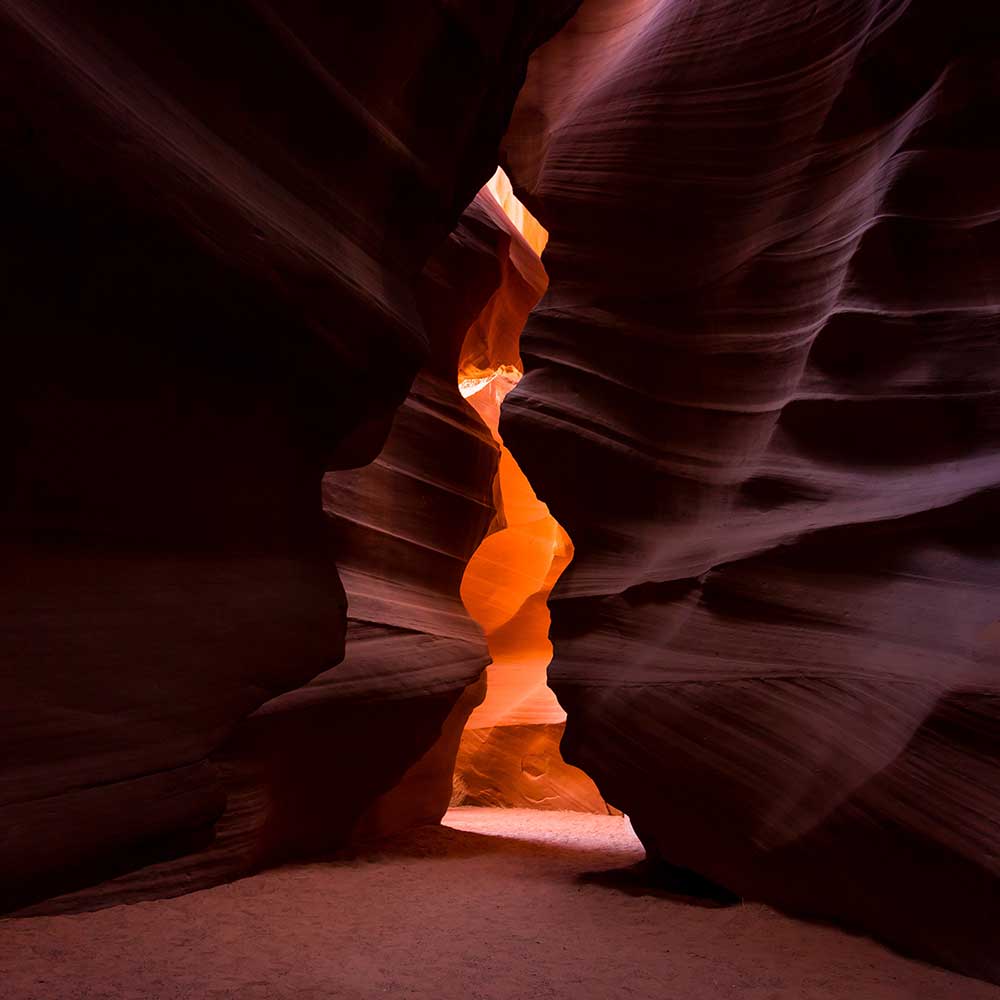


This madness continued inside the cave, where our guide explained how to place our phones to capture different shapes on the orangey walls: a heart, a cradle, an antelope (which I still can’t make out in my photo, by the way). At one point she even took my phone out of my hands to show the others exactly how to position themselves.
So much for communion with nature. On the other hand, the pictures were fantastic and got a lot of reactions on my Instagram account.
Chapter 7
To connect with nature, or not.
I find it hard to resist the pull of the phone, even in nature. Like many of my contemporaries, I’m addicted to social media and can’t stop myself from checking my notifications when they pop up. I also take tons of pictures with the express purpose of sharing them—even though I rarely do in the end.
But regardless, this action plunges us into a total paradox. We seek out nature to untether us from the frenetic pace of life, to drink in its therapeutic effects, even though, once we get there, we can’t help but approach it through a lens, or a screen. This tension between connecting and disconnecting is all the more absurd in light of what we know about the damaging effects of excessive cellphone use. The rise in rates of depression and anxiety, as well as the decrease in self-esteem in people born after 1995, are all partially linked to social networks.
You have to wonder whether we truly want to be in communion with nature at all anymore. This question was brought up by ex-park warden Charlie, and his comments echo those of professor and photographer Ellen Marie Sæthre-McGuirk:
“When you go out and you take these beautiful beach or mountain images, you also have to question what are you, as a photographer, really experiencing of this magnificent nature. If you’re just looking around trying to take all these pictures, what you are really looking for is trying to find the perfect frame. You’re not really trying to interact with the sounds, the temperature, the heat and the cold, the feeling of walking in the mountains. You are not really experiencing nature.”
Pulling out your phone is perhaps not the best way of immortalizing a moment, either. Professor of psychology Giuliana Mazzoni researches the relationship between photography and memory. When we take too many shots, we shift our focus to the device and the taking of pictures, to the detriment of what lies on the other side of the lens. The professor notes, too, that spending too much time on one’s phone taking photos “would take away part of the enjoyment of nature.”
This was exactly my impression as we left Antelope Canyon in Arizona. While looking at our guide’s van, I felt I’d just spent my whole visit experiencing the cave via my phone, not truly appreciating the natural wonder in front of my eyes or building any memory of it.
I was surprised, incidentally, to see that two tourists hadn’t taken a single picture during the visit. As we left the cave, I learned that their cellphone batteries were dead.
Fighting Fire with Fire
There are a number of people and organizations who use social networks to educate budding explorers. For example, the Office of Tourism in Jackson Hole, Wyoming, launched a campaign against geotagging natural sites in 2018.
“Every time someone tags the precise location in an epic nature photo, it brings excess traffic that’s harmful to the environment. As champions of conservation, we ask that you share your photos using a generic location tag: Tag Responsibly, Keep Jackson Hole Wild,” reads their website.

In July, the French sector of the World Wildlife Fund echoed this sentiment in a statement of their own that “geotagging protected sites on Instagram puts biodiversity in jeopardy.” The organization encourages their members to adopt the hashtag “I Protect Nature,” used on the platform since the end of 2014.
Luisa Jeffery decided to take action of a different sort. She started the Instagram account Youdidnotsleepthere in 2015 after a group trip to the Grand Canyon in Arizona. A friend had suggested setting up a tent in the middle of the breathtaking rocky landscape, just to take a picture of it. Camping wasn’t even allowed in the national park. The tent was completely for show.
“It was the first time that I realized that this is something that people do. And I never thought about that before. When I got back from the trip and was looking through Instagram, I noticed how frequently I was coming across photos that seemed staged.”
Since then, she calls out images that she finds ridiculous—such as shots of tents set up at Trolltunga in Norway.
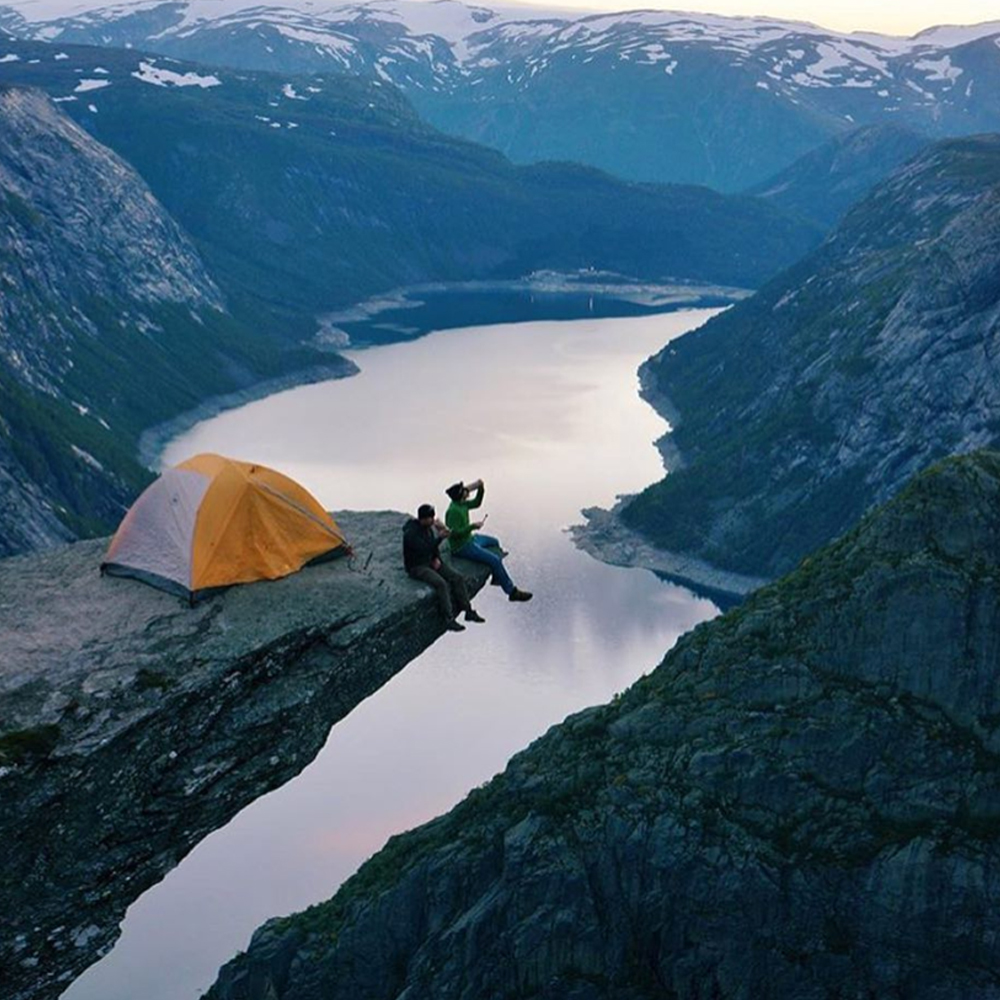



Although she started the page to make fun of a trend, she realized over time that she could use her account, followed by 150,000 people (at the time of writing), to better ends. She has since tried to make her followers more critical of what they see on social networking sites. She also uses her platform to promote environmental awareness.
Influencer Charles Post uses a similar tactic. More than 100,000 followers see his spectacular photos, which he uses mainly to draw people in—the message is in his detailed, conscientious captions. He draws attention in particular to places and species that are threatened, and the scientists working tirelessly to protect them.
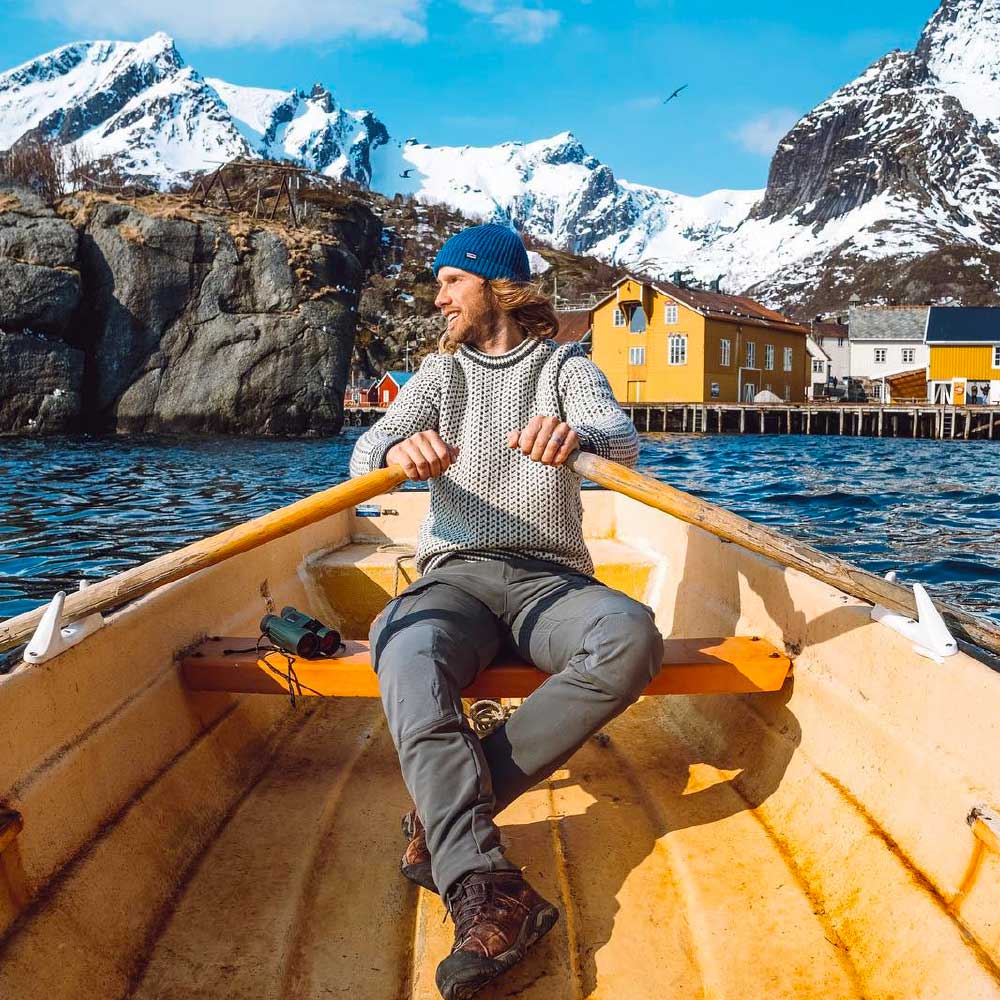

An ecologist by training, Post believes that people with influence should use their platform to promote responsible practices in nature. “You have to continually lead by example. To take every opportunity to inform, and to engage with the audience. People will only know there is another way if they are shown there is another way.”
National and provincial parks are also trying to educate the public on Instagram. For example, Parks Canada has used the platform to remind people to stay a safe distance away from wild animals, or to leave no trace, in order to preserve the plant life.
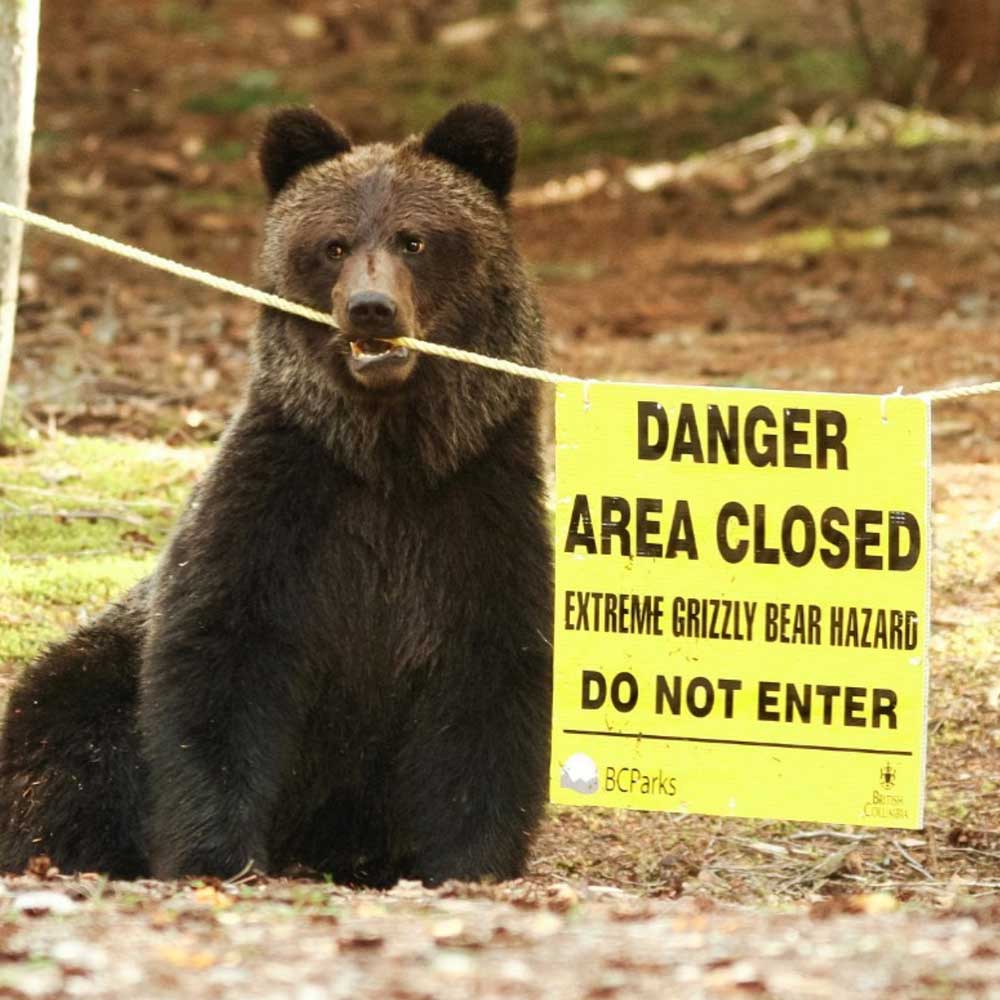
BC Parks has shared some similar posts. A photo of Joffre Lakes serves to list the basic rules for visiting natural sites: carry out your garbage and belongings, stay on the trails, and don’t feed the animals.
It’s just too bad the hashtag #joffrelakes is more popular than the BC Parks account…
It’s my last day in Joffre Lakes, and I’m having one last conversation with another visitor. The young man sits perched on a rock looking out over the third lake. We’re talking about my report, and he asks me what I’ve retained from all my research. I sum up as best as I can the way social media apps distort our relationship to nature. “Yeah, I get what you’re saying. But at the same time, look at this place. It is so amazingly beautiful. Why wouldn’t people want to come here?”
Indeed. Why not? Here I am, in my turn on the famous log.





